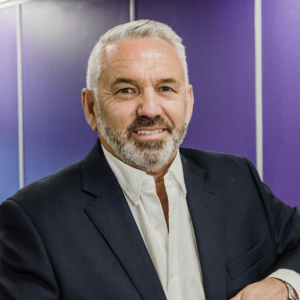Unified communications (UC) has had quite the year and a half.
Pre-pandemic, UC technology was seen as a nice-to-have for many organisations or were add-ons for existing software. The sudden shift to remote work in March last year proved that UC tools and technologies were fundamental in ensuring employees always had clear lines of communication with each other to ensure operational continuity.
In 2021, UC sits at the heart of most organisations as they transition into a hybrid working model to ensure employees can work how they want from where they want.
We spoke with industry experts from Enreach, Fuze, and LogMeIn to discuss the significant customer trends that have emerged this year and what the UC industry should expect for 2022.
What are the most significant customer trends from 2021?

Duncan Ward
Duncan Ward, CEO of Enreach UK:
The working habits and patterns that employees have developed throughout 2020 continued into this year and instigated IT providers to adapt to this massive shift in working models, according to Enreach’s Duncan Ward.
This has also brought the need for a better customer experience to the surface, he added.
“In 2021 we’ve acknowledged the need for a great customer experience, something that has previously been lacking in the industry,” he elaborated.
“Customers have been demanding quicker responses 24/7. As a result, we’re investing heavily in our customer experience to ensure that customers can contact us regardless of whether they have a quick question or a major fault”
Chris Perotti, VP of Digital Workplace at LogMeIn:
LogMeIn’s Chris Perotti echoed Ward’s comments, stating that employees’ needs are dictating more than ever the technologies their employers are investing in.
He noted that asynchronous communication tools is one of the “key” trends emerging from this shift to employee-centric decision-making.
“With more employees operating on different schedules and timezones while working remotely, joining a meeting at the same time or in the same room may not be an option,” he explained.
“That’s where asynchronous communications are really powerful, in providing people the flexibility to take in information on their own terms. It also leaves behind a digital paper trail of discussions, decisions, and actions that help to keep teams aligned and focused.”
However, asynchronous features such as chat or voice need visual elements to ensure that hybrid and remote working is cohesive for all employees.
“While more traditional asynchronous tools like chat or voice message options have been standard for years, they leave out the important visual aspects of meetings like a person’s face or gestures, as well as visual content on your screen like a presentation or shared desktop display,” Perotti continued.
“Video messaging tools provide the best of both worlds, and we’ve seen growing interest in this field that’s likely to continue into 2022 and beyond as remote and hybrid work models become the standard”

Matt Glock
Matt Glock, Worldwide VP of Sales Engineering at Fuze:
Asynchronous collaboration and real-time collaboration were also customer trends experienced by Fuze, according to its VP of Sales Engineering, Matt Glock.
UC data and insights gained by the use of machine learning (ML) has also become increasingly in demand from customers. Glock cited the benefits of this data, such as the ability to better organise time while working remotely, reducing back-to-back meetings and allowing more time for critical tasks to be of interest to Fuze customers.
“In today’s hybrid work environment, it’s never been more important for communication tools to make everyone feel included, whether working in the office or remotely,” he said.
“Business applications need to embed communication solutions with workstream notifications and individualised tailored workflows to ensure that everyone is in the know, as well as to empower workers – regardless of their location – to do their best work.”
What will be the top challenges facing end customers in 2022?

Chris Perotti
Chris Perotti, VP of Digital Workplace at LogMeIn:
Flexible working models are here to stay, but a major challenge facing organisations going into 2022 is deploying UC tools that go beyond just video and chat functionality, according to LogMeIn’s Perotti.
“Businesses have struggled with widespread meeting fatigue since the early days of the pandemic, while single-channel tools – like chat – lack the capabilities to convey the complex information often necessary to move projects along,” he noted.
“In order to overcome these challenges, companies need fully unified collaboration platforms offering both live and asynchronous communication tools that allow employees to collaborate when, where and how they need in the remote work world.”
Duncan Ward, CEO of Enreach UK:
Enreach’s Ward also warned that some customers still see hybrid working as a short-term effect of the pandemic and they need to reconsider this attitude because the working model is here to stay and they need to plan for that.
“For those who haven’t yet upgraded to the cloud, there will be a lack of scalability to change as the business changes,” he said.
“There will also be a lack of connection between all of the devices a business is using when, in 2022, all devices will need to talk to each other as businesses continue with hybrid working.”
Matt Glock, Worldwide VP of Sales Engineering at Fuze:
A key challenge facing businesses going into next year revolves around how digital transformation can meet the comms requirements of hybrid workers said Fuze’s Glock.
He cited recent data from Fuze which revealed that three-quarters of workers believe that flexible work should be an essential part of their work model, with 63 percent of frontline workers stating that they are willing to switch jobs for more flexibility.
“UC platforms are a critical component in creating the flexible work model that today’s workforce is increasingly expecting. Businesses will need to ensure this is adopted as a core business function in order to attract top talent in the future”
Which technology will deliver the greatest value to your customers in 2022?
Duncan Ward, CEO of Enreach UK:
This year’s trends will persist into 2022, meaning that cloud solutions, plug-and-play handsets, mobiles, and business-grade broadband will continue to deliver the greatest value to customers, according to Ward.
“All telecoms providers will continue to improve and invest in the customer experience to ensure the full customer journey is a positive one for businesses of all sizes. This is essential when it comes to delivering value throughout 2022 and beyond,” he stated.
Chris Perotti, VP of Digital Workplace at LogMeIn:
LogMeIn’s Perotti believes that there is a host of new technologies that will drive value for customers in 2022, and they are all centred around keeping employees connected with each other and the overall business.
“Some of the most prominent examples of these solutions include centralised corporate knowledgebase software, robust goal and process tracking tools, and platforms supporting asynchronous communication and collaboration among teams,” he listed.
“Two years into the era of remote work, the technologies we use need to go beyond video conferencing to better prevent information or cultural isolation among remote employees, and ensure clarity of expectations and outcomes.”
from UC Today https://ift.tt/3cmCPM4



0 Comments